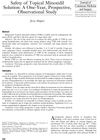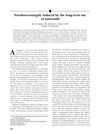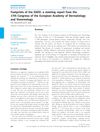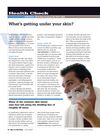Dermatological Drugs, Topical Agents, And Cosmetics
January 2005
in “
Side effects of drugs annual
”
alefacept botulinum toxin A calcipotriol diphenylcyclopropenone DPCP alopecia areata oral finasteride androgenetic alopecia topical glucocorticoids Cushing's syndrome hydroxyurea topical minoxidil neomycin moisturizers Psoralen plus UV-A PUVA therapy acitretin adapalene tretinoin isotretinoin fluconazole Botox Propecia Rogaine PUVA
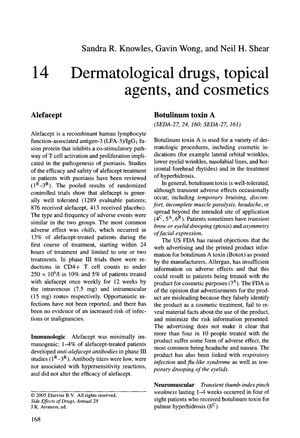
TLDR The document concluded that various dermatological treatments have different effectiveness and side effects, with some causing irritation, allergic reactions, or systemic effects.
The document from 2005 provided an overview of various dermatological treatments, highlighting their efficacy and side effects. Alefacept was well tolerated in 1289 patients, with chills as a common side effect. Botulinum toxin A had transient adverse effects, and the FDA criticized its advertising for underreporting risks. Calcipotriol caused irritation in up to 30% of patients, while Diphenylcyclopropenone (DPCP) for alopecia areata had a variable response rate and could cause severe dermatitis. Oral finasteride was effective for male androgenetic alopecia but had sexual side effects. Topical glucocorticoids could lead to systemic effects like Cushing's syndrome. Hydroxyurea could cause hematological effects and leg ulcers. Topical minoxidil was associated with allergic reactions and excessive hair growth. Neomycin and moisturizers could cause allergic reactions, with moisturizers also causing contact allergy. Psoralen plus UV-A (PUVA) therapy had risks like melanoma and neutropenia. Acitretin could cause elevated cholesterol and triglycerides, cheilitis, and hair loss. Adapalene showed minimal systemic absorption and was better tolerated than tretinoin. Isotretinoin was linked to various adverse reactions, but its association with psychiatric illness was not conclusively demonstrated. Tretinoin was associated with pseudotumor cerebri and other complications but was considered relatively safe for long-term use in treating photodamage. Drug interactions, particularly the inhibition of tretinoin metabolism by drugs like fluconazole, were also discussed. The document did not provide the number of participants for all studies, limiting the assessment of the studies' strengths.

